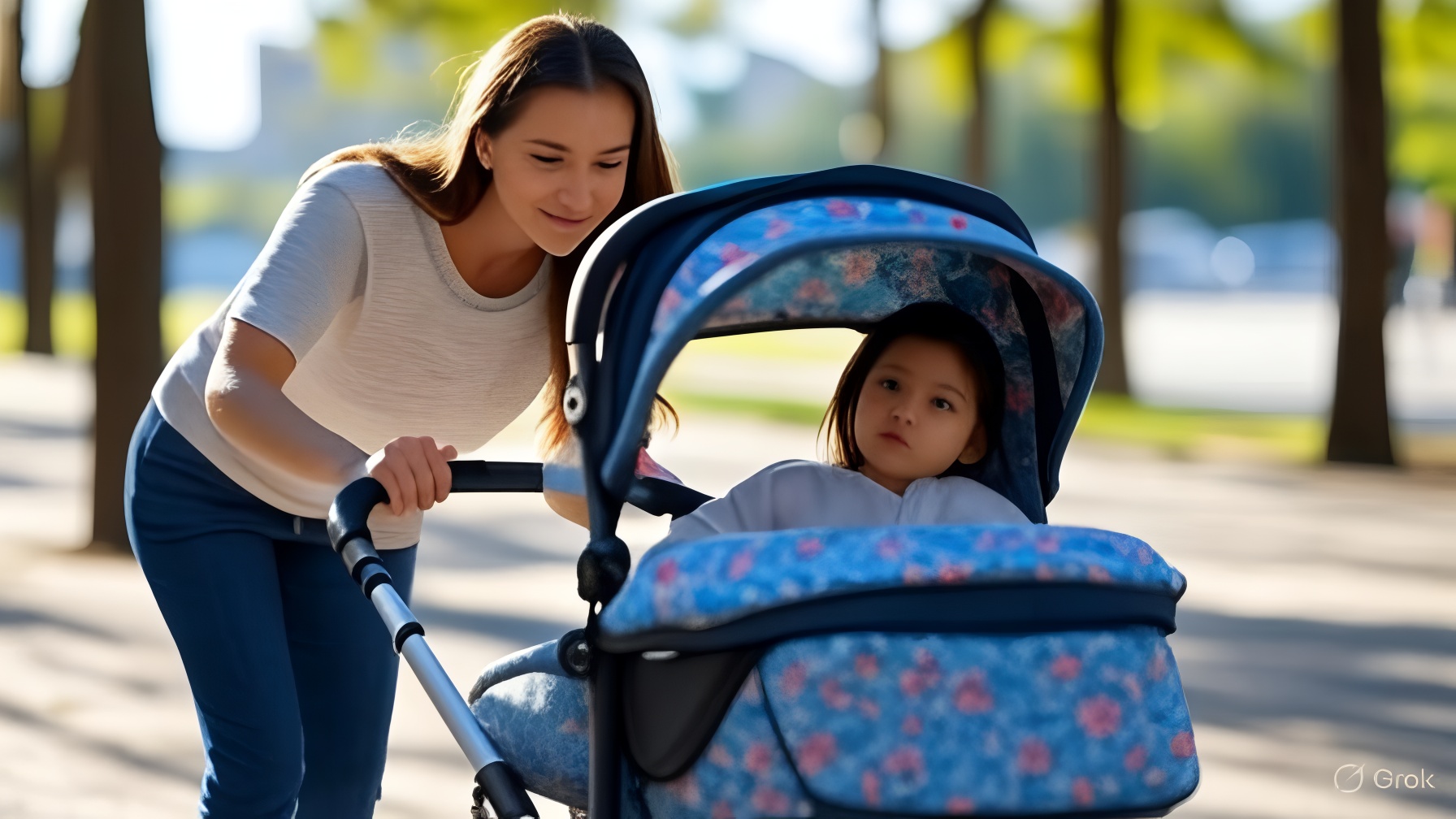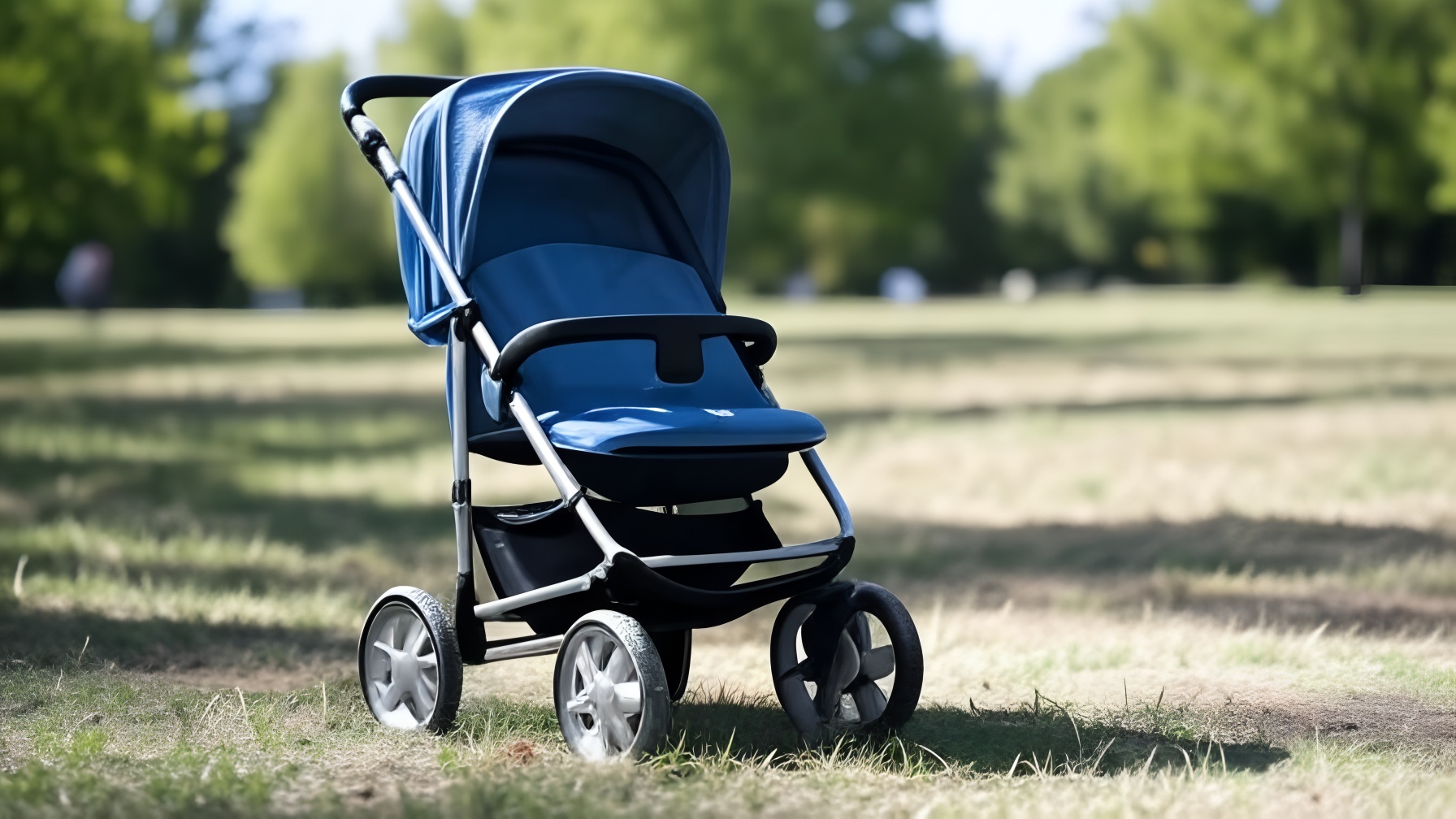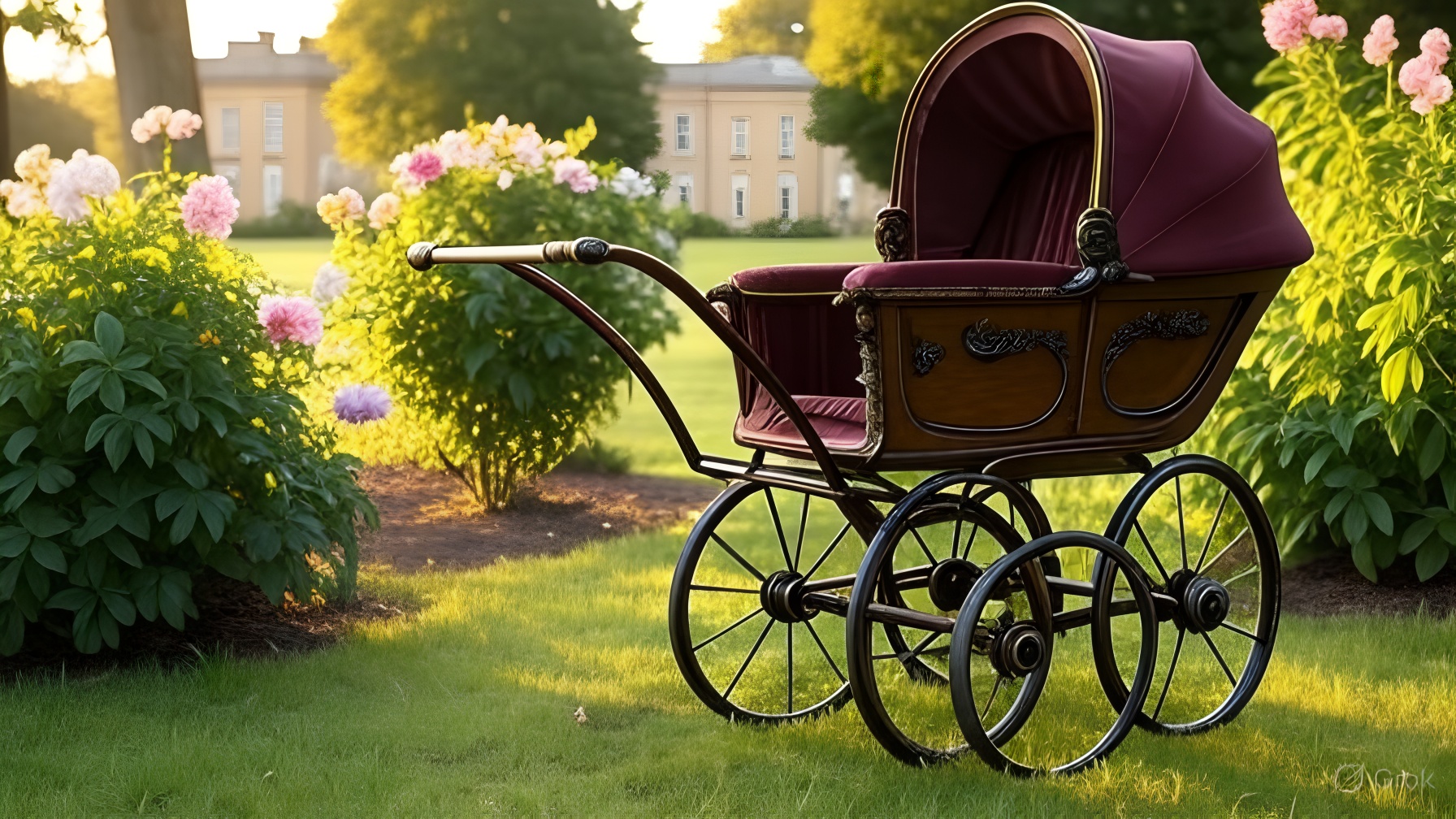Strollers are indispensable tools for parents, offering a safe and convenient way to transport children through parks, city streets, or travel adventures. However, frequent use exposes strollers to dirt, wear, and environmental factors that can compromise their functionality and hygiene. Proper maintenance not only ensures your stroller remains safe and comfortable for your child but also extends its lifespan, saving you money and reducing waste. This comprehensive guide provides detailed steps for cleaning, lubricating, inspecting, storing, and repairing your stroller, helping you keep it in top condition for years of reliable use.
1. Consult the Manufacturer’s Instructions
Every stroller model has unique features and materials, making it essential to follow the manufacturer’s care instructions. These guidelines, typically found in the user manual or on the manufacturer’s website (e.g., Chicco or UPPAbaby), provide model-specific advice on cleaning, lubrication, and maintenance. Failing to adhere to these instructions could damage components or void warranties. If you’ve lost the manual, most brands offer digital versions online. For example, UPPAbaby provides detailed maintenance tips for their strollers (Clever Clogs). Always start with these guidelines to ensure you’re using the right products and methods for your stroller.
2. Cleaning Your Stroller
Regular cleaning keeps your stroller hygienic, visually appealing, and free from debris that could affect its performance. The frequency and depth of cleaning depend on usage, but a combination of routine and deep cleaning ensures optimal care.
Routine Cleaning
Routine cleaning after each use or weekly prevents dirt and grime buildup:
-
Wipe Down Surfaces: Use a damp cloth with mild soap to clean the frame, handlebars, and seat. Focus on high-touch areas where germs accumulate. Avoid harsh chemicals that could damage materials or irritate your child’s skin.
-
Vacuum Debris: Use a handheld vacuum or a vacuum with a brush attachment to remove crumbs, dirt, or small debris from the seat, canopy, and crevices. Pay special attention to areas where the backrest meets the seat, as crumbs often collect there (Britax).
-
Spot Clean Stains: Address spills or stains immediately with a mild detergent and water. For fabric areas, test the cleaner on a small, inconspicuous spot first to ensure it doesn’t cause discoloration.
Deep Cleaning
A deep clean, recommended monthly or seasonally for frequent users, restores your stroller to like-new condition:
-
Remove Fabric Components: If your stroller has removable fabric parts, such as the seat cover, canopy, or basket, detach them according to the manual. Not all strollers have removable fabrics, so check first (Lysol).
-
Wash Fabrics: Follow the care label instructions. Machine-washable fabrics should be cleaned on a gentle cycle with mild detergent, while hand-washable fabrics require soaking in cool water and gentle scrubbing. Avoid bleach unless specified, as it can weaken fibers or cause fading.
-
Clean the Frame: Use a damp cloth with mild detergent to clean the metal or plastic frame, focusing on joints, folding mechanisms, and areas exposed to dirt. Rinse with a clean, damp cloth to remove soap residue, and dry thoroughly to prevent rust (Clever Clogs).
-
Clean Wheels: Remove wheels if possible (some strollers have easy-release mechanisms) and wash with soap and water to remove mud, sand, or debris. Clean axles and bearings to ensure smooth rotation. Dry completely before reattaching (Pram Valet).
-
Reassemble Carefully: Once all parts are dry, reassemble the stroller, ensuring all components are securely attached.
Disinfecting
Disinfecting is crucial after illnesses, for second-hand strollers, or when used by multiple children:
-
Use Baby-Safe Products: Choose disinfectants labeled as safe for children, such as Lysol Disinfectant Spray, or natural alternatives like a water-vinegar solution (1:1 ratio). Avoid strong chemicals with harsh odors, as children are sensitive to them (Wirecutter).
-
Target High-Touch Areas: Focus on handles, buckles, and straps where germs are likely to accumulate. Spray or wipe the disinfectant, let it sit for the recommended time (usually 1-2 minutes), and wipe clean.
-
Frequency: Disinfect after your child has been sick or before using a second-hand stroller to ensure a hygienic environment.
|
Cleaning Task |
Frequency |
Tools Needed |
Key Tips |
|---|---|---|---|
|
Routine Cleaning |
After each use or weekly |
Damp cloth, mild soap, handheld vacuum |
Quick wipes prevent dirt buildup; vacuum crevices for crumbs. |
|
Deep Cleaning |
Monthly or seasonally |
Mild detergent, water, soft brush, towel |
Remove fabrics if possible; dry thoroughly to prevent mold. |
|
Disinfecting |
After illness or for used strollers |
Baby-safe disinfectant, vinegar solution |
Focus on high-touch areas; avoid harsh chemicals. |
3. Lubricating Moving Parts
Lubrication ensures smooth operation of your stroller’s wheels, axles, and folding mechanisms, preventing squeaks and wear.
-
Parts to Lubricate: Focus on wheel axles, swivel joints, brake pins, and folding hinges. These areas experience friction and are prone to stiffness (Chicco).
-
Choosing a Lubricant: Use silicone-based lubricants or products designed for strollers, such as Primo Passi Spray Lubricant or Super Lube Synthetic Grease, which are non-toxic and safe for plastic and polymer materials (Amazon, Super Lube). Avoid petroleum-based products like WD-40, as they can attract dirt and may not be safe for children (Hint Mama).
-
Application: Apply a small amount of lubricant to the designated areas, rotate wheels or move parts to distribute it evenly, and wipe away excess to prevent dirt accumulation. For removable wheels, clean the shafts first to remove debris (Strollberry).
-
Frequency: Lubricate every 2-3 months or when you notice squeaking or stiffness, especially after use on rough terrain or in sandy environments.
4. Checking Safety Features
Regular safety checks are critical to ensure your stroller remains secure for your child.
-
Brakes: Engage the brakes and gently push the stroller to confirm they hold both wheels securely. Inspect brake pads for wear and lubricate if squeaky (Little Baby Gear).
-
Harness: Check the five-point harness for fraying, tears, or stretched straps. Ensure buckles click securely and release smoothly. Adjust straps to fit your child comfortably.
-
Frame Integrity: Inspect the frame for cracks, bends, or loose screws. A compromised frame can lead to collapse, posing a safety risk.
-
Folding Mechanism: Test the folding mechanism to ensure it locks securely in both open and folded positions to prevent accidental collapse (Magic ZC).
-
Frequency: Perform these checks monthly or before each use for frequently used strollers. Address any issues immediately to maintain safety.
5. Proper Storage
Correct storage prevents damage from environmental factors and extends your stroller’s lifespan.
-
Dry, Cool Environment: Store the stroller indoors in a dry, cool place to avoid rust, mold, or fabric fading. Avoid damp basements or areas exposed to direct sunlight (Mamazing).
-
Clean Before Storing: Ensure the stroller is clean and completely dry before storage to prevent mold or odors. This is especially important for long-term storage.
-
Use a Protective Cover: For extended storage, use a stroller bag or breathable cover to protect against dust and debris.
-
Proper Folding: Fold the stroller according to the manufacturer’s instructions to avoid stressing the frame or mechanisms.
6. Inspecting for Wear and Tear
Regular inspections help identify issues before they compromise safety or functionality.
-
Wheels and Tires: Check for worn treads, punctures, or misalignment. For pneumatic tires, maintain the recommended air pressure (check the manual) weekly to ensure smooth rides. Foam or solid tires should be inspected for cracks or excessive wear (Made-in-China).
-
Straps and Harnesses: Look for fraying or weakened areas that could affect safety. Replace damaged straps immediately.
-
Frame and Joints: Inspect for cracks, bends, or loose parts. Tighten screws as needed and check welds for integrity.
-
Suspension (if applicable): Ensure the suspension system functions smoothly without excessive wear.
-
Frequency: Inspect monthly or after heavy use, such as on rough terrain or after beach outings.
7. Repair and Replacement
Addressing wear and tear promptly keeps your stroller functional and safe.
-
DIY Repairs: Minor issues, such as loose screws or small tears in fabric, can often be fixed at home with basic tools like screwdrivers or a sewing kit. Tighten loose parts or patch minor fabric damage with baby-safe materials.
-
Professional Repairs: For complex issues like broken frames or malfunctioning folding mechanisms, contact professional repair services or the manufacturer. Online reviews or parenting forums can help find reputable services (Child Friendly Gear).
-
Replacement Parts: Purchase wheels, tires, brakes, or fabric covers from the manufacturer or authorized dealers to ensure compatibility. For example, UPPAbaby offers replacement parts like bumper bars (Clever Clogs). Check the warranty, as some parts may be covered.
-
When to Replace: If repairs are not feasible or the stroller shows significant structural damage, consider replacing it to ensure safety.
|
Maintenance Task |
Purpose |
Frequency |
Resources Needed |
|---|---|---|---|
|
Lubrication |
Ensures smooth operation, prevents squeaks |
Every 2-3 months |
Silicone-based lubricant, cloth |
|
Safety Checks |
Maintains secure operation |
Monthly or per use |
None; visual and manual inspection |
|
Wear and Tear Inspection |
Identifies potential issues |
Monthly or after heavy use |
Basic tools (screwdriver, wrench) |
|
Repairs/Replacements |
Restores functionality |
As needed |
Manufacturer parts, professional services |
8. Additional Tips for Longevity
To maximize your stroller’s lifespan, incorporate these practices into your routine:
-
Avoid Overloading: Respect the manufacturer’s weight limits to prevent strain on the frame, wheels, or suspension. Overloading can lead to premature wear or breakage.
-
Choose Appropriate Terrain: Use all-terrain strollers for rough surfaces like gravel or trails, and lightweight models for smooth pavements. This reduces stress on wheels and frames (Little Lou Baby).
-
Clean After Harsh Conditions: After outings to the beach or muddy areas, clean the stroller thoroughly to remove sand, salt, or dirt that could cause corrosion or damage (Amazon).
-
Regular Maintenance Schedule: Set reminders for monthly inspections or seasonal deep cleans to stay proactive. For example, check tire pressure weekly for pneumatic tires or lubricate after beach trips.
-
Use Online Resources: Parenting blogs, YouTube tutorials, and manufacturer websites offer valuable troubleshooting tips and maintenance advice. Forums like Reddit’s r/daddit can provide community insights (Reddit).
Troubleshooting Common Issues
-
Squeaky Wheels: Often caused by dirt or lack of lubrication. Clean the wheels and axles, then apply a silicone-based lubricant. If the issue persists, check for worn bearings or misalignment.
-
Sticky Folding Mechanism: Debris or rust may be the culprit. Clean the hinges thoroughly and lubricate with a baby-safe product. Ensure the mechanism locks securely.
-
Wobbly Frame: Tighten loose screws or bolts. If the frame is cracked or bent, consult a professional or replace the stroller.
-
Flat Tires: For pneumatic tires, check for punctures and patch or replace the inner tube. Maintain proper air pressure to prevent flats.
Special Considerations for Different Stroller Types
-
Lightweight Strollers: These are prone to wear on smooth surfaces. Focus on keeping wheels clean and lubricated to maintain maneuverability.
-
All-Terrain Strollers: Require frequent cleaning and lubrication due to exposure to rough terrain. Check tire pressure regularly for pneumatic tires.
-
Foldable Strollers: Pay extra attention to the folding mechanism to ensure it remains smooth and secure (Mamazing).
-
Second-Hand Strollers: Perform a thorough deep clean and safety check before use. Disinfect all surfaces and inspect for hidden wear or damage.
Conclusion
Maintaining and caring for your stroller is a worthwhile investment that ensures safety, comfort, and longevity. By following a regular routine of cleaning, lubricating, inspecting safety features, storing properly, and addressing repairs promptly, you can keep your stroller in excellent condition. Whether you’re navigating daily walks or preparing for a family trip, a well-maintained stroller provides peace of mind and reliable performance. Make maintenance a habit, consult your manufacturer’s guidelines, and use baby-safe products to create a clean, safe, and enjoyable ride for your child.




